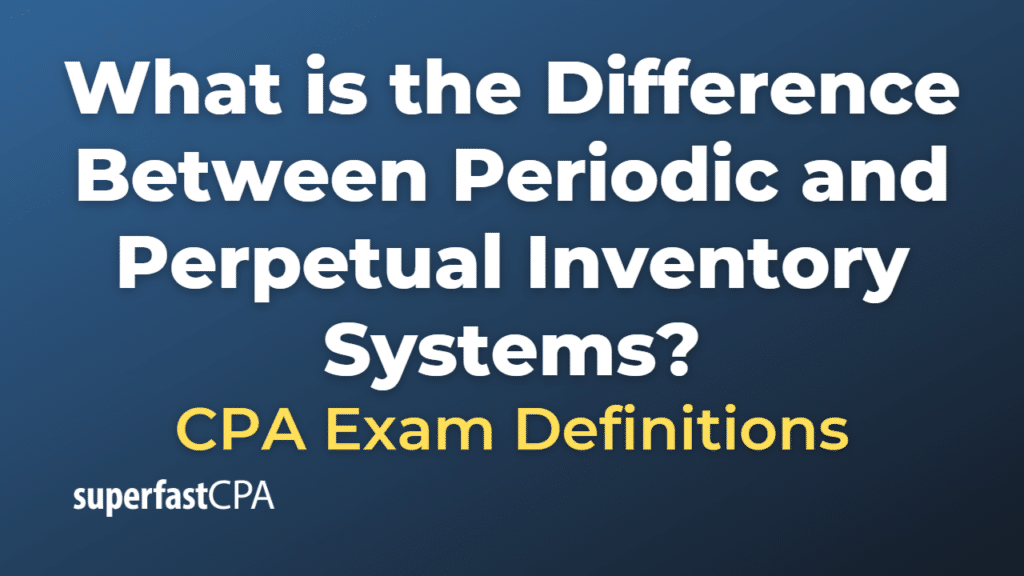Difference Between Periodic and Perpetual Inventory Systems
The primary difference between the periodic and perpetual inventory systems lies in the timing of updates to the inventory records. Here are the details:
Periodic Inventory System:
In a periodic inventory system, inventory is not updated continuously. Instead, the count is updated at regular intervals, which could be monthly, quarterly, or annually. During these updates, a physical count of the inventory is performed, and the cost of goods sold is calculated and recorded in the company’s financial records.
This system is less expensive and easier to manage since it doesn’t require sophisticated inventory tracking software or real-time tracking. However, it doesn’t provide an up-to-date record of inventory and cost of goods sold. This could lead to stockouts (running out of inventory) or overstocking.
In a perpetual inventory system , inventory records are updated continuously with each purchase and sale. This system uses barcoding and scanning technologies, point-of-sale systems, and inventory management software to keep an up-to-date record of inventory and cost of goods sold.
A perpetual inventory system provides a highly accurate, real-time view of inventory levels, which can help a business manage inventory more effectively and make timely decisions. However, it can be more expensive and complex to manage due to the need for advanced inventory tracking systems and technology.
It’s also worth noting that while the perpetual inventory system keeps track of inventory in real-time, occasional physical counts are still necessary to verify the accuracy of the system due to potential issues like theft, damage, or data entry errors.
In summary, the choice between a periodic and perpetual inventory system often depends on the size of the business, the volume of inventory it handles, the complexity of its operations, and its resources.
Example of the Difference Between Periodic and Perpetual Inventory Systems
Let’s use the example of a bookstore for both systems:
Periodic Inventory System Example:
Suppose the bookstore starts the month with 500 books. During the month, it purchases another 200 books from various publishers. So, without considering sales, it theoretically should have 700 books in stock.
The bookstore uses a periodic inventory system, and it counts its inventory at the end of each month. When it counts the inventory at the end of the month, it finds that it has 300 books left. By subtracting this from the 700 books it should have, it determines that it sold 400 books during the month.
Perpetual Inventory System Example:
Now, suppose the bookstore switches to a perpetual inventory system. It still starts the month with 500 books and buys another 200 during the month. However, every time it sells a book, it scans the barcode, which automatically updates its inventory records.
So, when a book is sold, the inventory count decreases by one in real-time. If the bookstore sold 10 books in a day, for example, the inventory count would decrease by 10 that day. Therefore, at any given moment, the bookstore knows exactly how many books it has in stock without needing to do a physical count.
Again, in both cases, the bookstore would likely still do a physical inventory count occasionally to ensure the accuracy of their records. This could account for circumstances such as theft, damage, misplacement, or data entry errors, which might not be reflected in the system.













